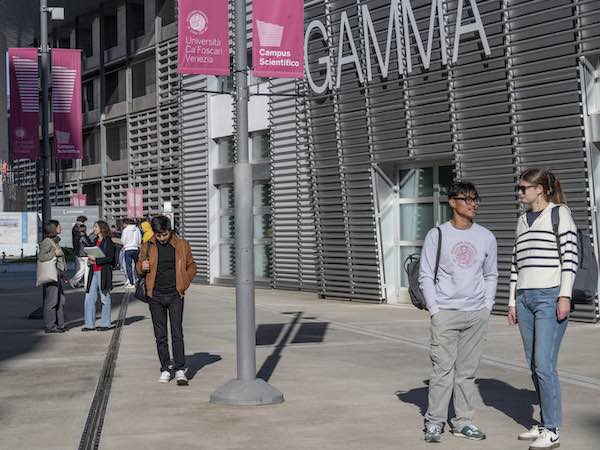A few weeks ago, Ca' Foscari was listed fourth in Europe and first among Italian universities for outgoing student mobility in the new QS Europe University Rankings. This outcome confirms our university’s steadily growing trend in internationality and opportunities for students to gain experience abroad, which is an essential asset in education.
Among the various mobility projects active at Ca' Foscari, the Erasmus+ International Credit Mobility (ICM) programme supports extra-EU exchange projects involving students, faculty and administrative staff.
ICM serves as a bridge between international mobility and European funding by issuing competitive calls. Funding for mobility grants in support of study, internships, teaching and vocational training is in fact obtained by submitting project proposals for partner countries/regions. These proposals are then assessed by external experts and managed by the Erasmus+ National Agency INDIRE.
In the 2014-2020 Erasmus+ programming period, Ca' Foscari was the Italian University obtaining the largest funding for the ICM Action, for a total of €6,069,733.
The Erasmus+ KA107 International Credit Mobility project for the period 2020-2023 received a total of €395,385. This was the sixth ICM project presented by Ca' Foscari and involved 9 countries and 16 partner universities in Europe, Asia and Oceania, in line with the geographical objectives of the Strategic Plan 2016-2020.
Pan Jingzhi, an incoming Chinese student from Fudan University (China) and a PhD student in Philosophy of Art, is one of the students who were involved in this mobility project. We asked her to tell us about her experience.
Why did you choose Ca' Foscari?
Ca' Foscari University of Venice has a long history, is a prestigious higher education institution in Europe, and has a good exchange and cooperation relationship with the School of Philosophy of Fudan University. Venice is an ideal destination for students majoring in art history and philosophy of art. It not only has rich artistic and cultural resources, museum resources, and perfect curatorial mechanisms, but it also plays a role in influencing students' artistic taste and appreciation. There are numerous museums, galleries, and art institutions on the main island of Venice alone, not to mention medieval churches and rich historical and cultural sites. International programmes such as the Venice Biennale, the Venice Architecture Biennale, and the Venice Film Festival can broaden the horizons of art students. In addition, many of the cities around Venice are historical and cultural cities, such as the adjacent Padua with Giotto's original paintings and Goethe's palm trees, the Renaissance city of Ferrara, the city of abundance of Bologna, Juliet's hometown of Verona, etc. All these places are worth exploring and visiting, and it is also very convenient to travel by train.
How has this experience impacted your academic path and your life?
My foreign supervisor, Matteo Bertelé is an expert in CSAR (Centre for Studies in Russian Art) at the Department of Philosophy and Cultural Heritage of Ca' Foscari University of Venice. His research aligns with the research direction of my doctoral thesis and he could provide necessary academic support and guidance. The study atmosphere at CSAR, where I worked, was very inclusive and open. After I arrived in Venice, my tutor Matteo arranged a study station for me, and on weekdays, all of the Ph.D. candidates such as myself would get together to drink coffee and share their research content. In addition to the daily learning tasks, the University of Venice was also very rich in academic lectures and exhibition activities. Often, scholars from various universities in Italy, as well as scholars from other European countries, jointly organised lectures and shared activities. These lectures broadened my horizon to understand the research hotspots and research systems of different regions and countries, and provided an excellent opportunity to build a network with peers. I recorded the key theoretical points and the artist cases I was interested in during the lectures, and they became a source of inspiration for my research.














